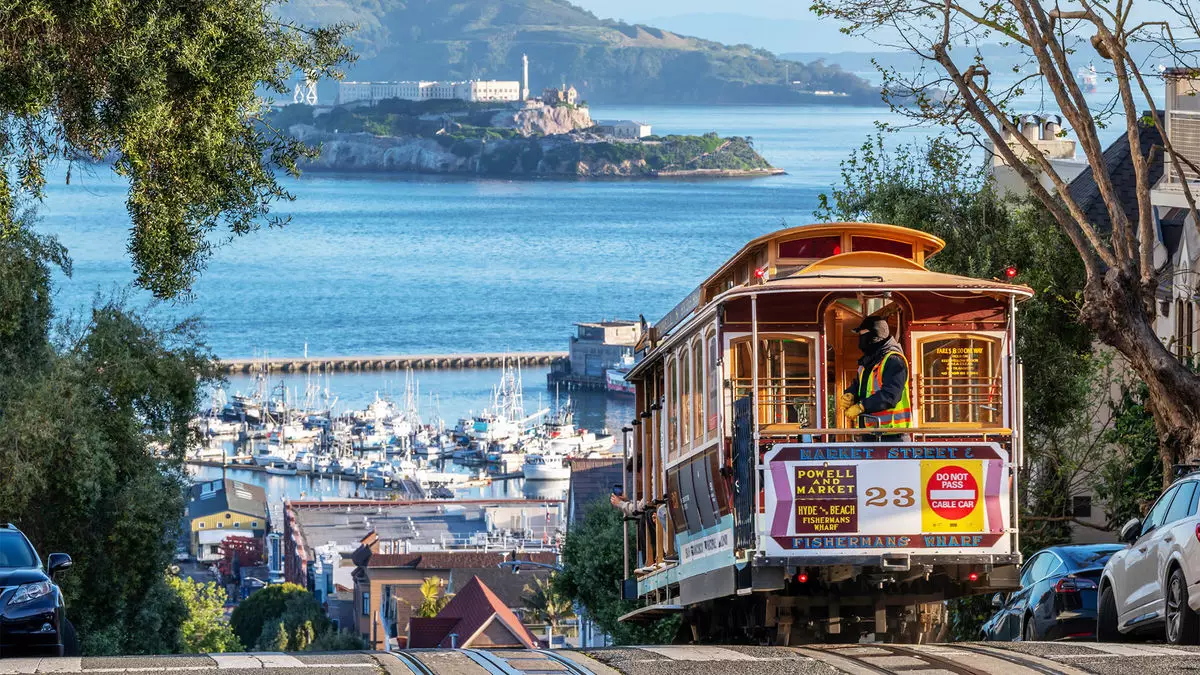The tourism landscape in San Francisco has been significantly challenged since the onset of the pandemic. As the city grapples with its recovery, insights from industry experts offer a glimpse into a potentially brighter future for its visitor economy come 2025. This optimism comes on the heels of adverse conditions, including labor disputes and a slow rebound in convention attendance, which have hampered the city’s reputation as a premier destination for both leisure and business travel.
In the past year, San Francisco’s hospitality sector reached a low that seemed unfathomable before the pandemic. Hotel occupancy remained stagnant, and both average daily rates (ADR) and revenue per available room (RevPAR) exhibited concerning declines. The commitment to tourism, however, remains steadfast, with experts predicting that the tail end of 2024 would mark the lowest point in this ongoing recovery. Emmy Hise, a senior figure in hospitality analytics at CoStar, pointed out that anticipated increases in convention bookings did not materialize as hoped. She noted that the absence of high-profile summits like the Asia-Pacific Economic Cooperation conference in 2023 was a significant setback, signaling that the climb back to pre-pandemic glory would be slow and deliberate.
Adding to the challenges, decreased international tourism, particularly from Asia, underscores a broader struggle for San Francisco. This diminishing flow of visitors impacts the overall vibrancy of the city—one that previously thrived on its rich tapestry of global cultures. The steady trickle of returning travelers will need to accelerate significantly for the city’s visitor economy to regain its footing.
Addressing Public Safety and Perceptions
In addition to the pandemic-related issues, San Francisco has contended with public safety concerns that have influenced perceptions of the city, impacting both locals and potential visitors. Anna Marie Presutti, CEO of the San Francisco Travel Association, remarked on the city’s efforts to combat negative narratives surrounding crime. Recent statistics indicate improvements, with substantial reductions in property and violent crime rates. A commitment to bolstering public safety measures, such as hiring more police officers and integrating advanced surveillance systems, demonstrates the city’s resolve to enhance the public’s confidence in its safety.
Given the ongoing debate about homelessness, it is worth noting that San Francisco has made significant progress in reducing street homelessness through expanded shelter capacity and increased support systems. As of early 2024, the city reported its lowest homelessness rates in a decade, a glimmer of hope that suggests success in community efforts.
While 2024 may have been a tough year for San Francisco, the upcoming calendar promises to reinvigorate interest in the city. High-profile sporting events such as the NBA All-Star Game, NCAA March Madness, and the renowned Laver Cup will place San Francisco firmly in the spotlight. These events not only attract local residents but also draw national attention, showcasing the city’s unique allure.
Looking further, the San Francisco area is poised to host major global events like the FIFA World Cup in 2026 and the Super Bowl in nearby Santa Clara, providing a significant economic boost to the region. This surge in visibility can reshape public perceptions, enhancing the reputation of San Francisco as a thriving destination for visitors from all walks of life.
Additionally, a shift in convention bookings, particularly the eclectic approach taken by corporations such as Microsoft—who secured their convention with an unexpectedly short lead time—highlights an evolving landscape in how events are now planned. Presutti notes that this unconventional approach demonstrates a renewed energy in San Francisco’s events sector, paving the way for a more robust recovery strategy moving forward.
New Initiatives to Enhance Visitor Experiences
Beyond event-driven tourism, city officials are keen to elevate the visitor experience through fresh initiatives. For instance, the introduction of entertainment zones allowing outdoor alcohol service, as well as expanded cultural engagements like street festivals and night markets, is set to activate various neighborhoods, encouraging exploration.
Moreover, San Francisco Travel is making strides to revamp its marketing strategy, opting for innovative channels to exhibit the city’s offerings. By spotlighting both well-known and hidden gems within the city, the organization aims to attract a more diverse visitor demographic.
While 2024 represents a challenging chapter in San Francisco’s rebound, the city’s strategic focus on events, public safety, and visitor engagement are pivotal steps toward revitalization. With renewed hope for 2025, stakeholders are preparing for a revival rooted in resilience and innovation, marking a new era for the City by the Bay.


Leave a Reply